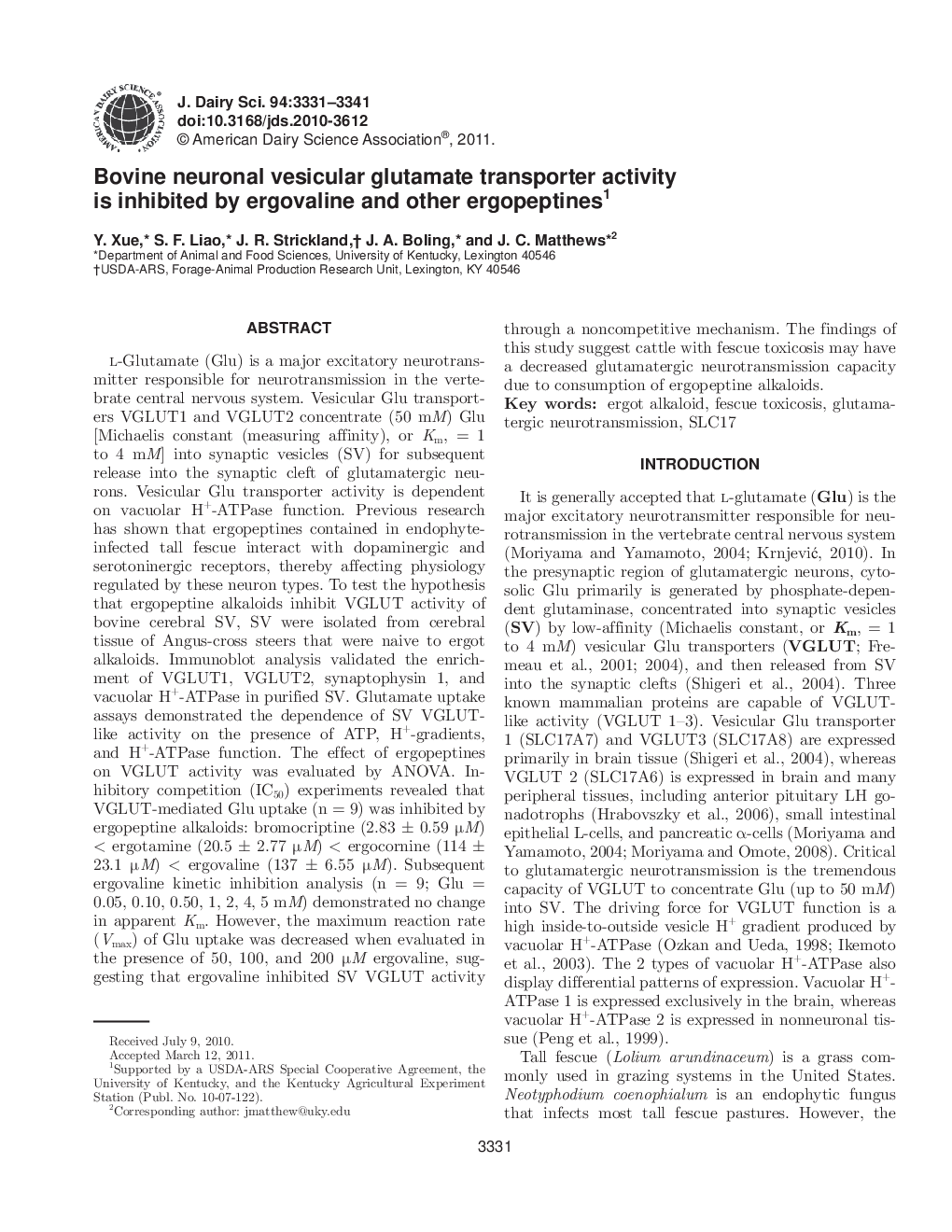| Article ID | Journal | Published Year | Pages | File Type |
|---|---|---|---|---|
| 10979320 | Journal of Dairy Science | 2011 | 11 Pages |
Abstract
l-Glutamate (Glu) is a major excitatory neurotransmitter responsible for neurotransmission in the vertebrate central nervous system. Vesicular Glu transporters VGLUT1 and VGLUT2 concentrate (50 mM) Glu [Michaelis constant (measuring affinity), or Km, = 1 to 4 mM] into synaptic vesicles (SV) for subsequent release into the synaptic cleft of glutamatergic neurons. Vesicular Glu transporter activity is dependent on vacuolar H+-ATPase function. Previous research has shown that ergopeptines contained in endophyte-infected tall fescue interact with dopaminergic and serotoninergic receptors, thereby affecting physiology regulated by these neuron types. To test the hypothesis that ergopeptine alkaloids inhibit VGLUT activity of bovine cerebral SV, SV were isolated from cerebral tissue of Angus-cross steers that were naive to ergot alkaloids. Immunoblot analysis validated the enrichment of VGLUT1, VGLUT2, synaptophysin 1, and vacuolar H+-ATPase in purified SV. Glutamate uptake assays demonstrated the dependence of SV VGLUT-like activity on the presence of ATP, H+-gradients, and H+-ATPase function. The effect of ergopeptines on VGLUT activity was evaluated by ANOVA. Inhibitory competition (IC50) experiments revealed that VGLUT-mediated Glu uptake (n = 9) was inhibited by ergopeptine alkaloids: bromocriptine (2.83 ± 0.59 μM) < ergotamine (20.5 ± 2.77 μM) < ergocornine (114 ± 23.1 μM) < ergovaline (137 ± 6.55 μM). Subsequent ergovaline kinetic inhibition analysis (n = 9; Glu = 0.05, 0.10, 0.50, 1, 2, 4, 5 mM) demonstrated no change in apparent Km. However, the maximum reaction rate (Vmax) of Glu uptake was decreased when evaluated in the presence of 50, 100, and 200 μM ergovaline, suggesting that ergovaline inhibited SV VGLUT activity through a noncompetitive mechanism. The findings of this study suggest cattle with fescue toxicosis may have a decreased glutamatergic neurotransmission capacity due to consumption of ergopeptine alkaloids.
Related Topics
Life Sciences
Agricultural and Biological Sciences
Animal Science and Zoology
Authors
Y. Xue, S.F. Liao, J.R. Strickland, J.A. Boling, J.C. Matthews,
